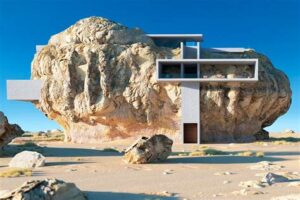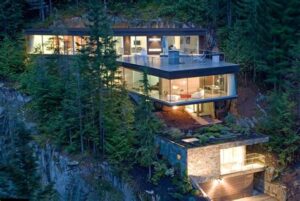Explore Hank’s journey from vision to reality in creating his dream home, with insights on design, quality materials, and the stunning final outcome.Welcome to our journey through the creation of a spectacular dwelling, aptly named “The House That Hank Built.” This blog post will delve into the meticulous planning and passionate vision that transformed a mere concept into a stunning reality. We’ll explore Hank’s vision for the house, focusing on the unique features and personal touches that make it truly special. From designing the perfect floor plan to selecting high-quality building materials, each step was integral in bringing this dream home to life. Join us as we showcase the finished masterpiece, celebrating the craftsmanship and attention to detail that define Hank’s remarkable creation. Whether you’re a fellow home enthusiast or simply curious about innovative design, this post promises to inspire and inform.
Hank’s Vision for the House
Hank has always dreamed of creating a home that embodies both functionality and aesthetic appeal. His vision for the house is not just about walls and roofs; it reflects his life philosophy and the values he holds dear. The idea is to build a space that feels welcoming, promotes a sustainable lifestyle, and encourages gatherings with family and friends.
The design starts with the concept of an open floor plan. Hank believes that an open layout fosters communication and connection among family members. Large living spaces that flow seamlessly into each other, combined with strategic placements of windows for natural light, are key aspects of his vision. This approach not only maximizes the available space but also integrates the indoor living areas with the beautiful outdoor landscape.
In addition to the layout, Hank emphasizes the importance of utilizing eco-friendly materials. He opts for renewable resources and local craftsmanship whenever possible to minimize the environmental footprint. His vision includes energy-efficient systems that provide comfort and reduce utility bills. Ultimately, Hank’s house will be a reflection of his values while providing a nurturing environment for generations to come.
Designing the Perfect Floor Plan
Designing the perfect floor plan is essential to creating a house that feels like home. When considering Hank’s Vision for the House, it’s crucial to incorporate elements that reflect both functionality and style. The layout should not only facilitate daily activities but also provide a welcoming environment for family and friends.
One of the first steps in designing a floor plan is to identify the key areas of use. This includes spaces such as the kitchen, living room, and bedrooms. To effectively map out these areas, it’s beneficial to visualize how each space relates to one another. For example, an open concept layout often enhances interaction and flow between the kitchen and living areas. Here’s a simple table highlighting some popular floor plan layouts:
| Layout Type | Description | Advantages |
|---|---|---|
| Open Concept | Fewer walls separating rooms | Enhanced communication and space utilization |
| Traditional | Separate rooms for each function | Defined spaces and privacy |
| Split-Level | Levels divided by short flights of stairs | Efficient use of vertical space |
In addition to layout type, incorporating natural light is key in any floor plan. Therefore, consider large windows or skylights that can brighten up the interior spaces and enhance the overall ambiance of the home. Moreover, when planning bedrooms, ensure that there is enough distance from common areas to provide privacy. These thoughtful considerations will help achieve a harmonious balance in Hank’s Dream Home.
Selecting High-Quality Building Materials
Building a dream home starts with the right materials. Selecting high-quality building materials is not just about aesthetics; it’s about durability, sustainability, and long-term value. Each element of the house contributes to its overall performance, making material selection a critical step in the construction process.
When choosing materials, consider the following aspects:
- Durability: Quality materials can withstand the test of time and weather, reducing the need for repairs and replacements.
- Sustainability: Eco-friendly materials help minimize environmental impact while providing excellent performance.
- Cost-efficiency: While high-quality materials may have a higher upfront cost, they often prove more economical over time due to lower maintenance and replacement needs.
Additionally, it’s essential to consult with experts and suppliers to understand the various options available. Whether it’s selecting wood, brick, or steel, each choice will impact the final results of Hank’s house. Making informed decisions about building materials will ultimately lead to a home that i
Bringing Hank’s Dream Home to Life
Bringing Hank’s dream home to life is not just about constructing a house; it’s about creating a sanctuary that embodies his visions and aspirations. The journey of transforming a mere blueprint into a functional and beautiful space requires meticulous planning and execution. Each decision made during this process contributes to the overall aesthetics and functionality of the home.
One of the first steps in this process is to carefully select high-quality building materials that will not only ensure durability but also reflect Hank’s personal style. From the moment the foundation is laid, every aspect of construction plays a critical role. For instance, using sustainable materials can evoke a sense of eco-friendliness while fulfilling the dream of creating a contemporary home.
Incorporating various design elements such as energy-efficient appliances, natural lighting, and innovative storage solutions enables Hank’s dream home to resonate with comfort and ease of living. Each room is crafted to meet specific needs, ensuring that functionality does not take away from aesthetic appeal. The result is a harmonious blend that truly represents Hank’s vision.
Showcasing the Finished Masterpiece
The culmination of passion, dedication, and creativity, Hank’s house stands as a testament to what can be achieved with clear vision and meticulous planning. With every corner thoughtfully designed, this home is not just a structure; it embodies Hank’s dreams and aspirations.
As we walk through the grand entrance, the open floor plan draws the eye immediately. Natural light floods in through large windows, illuminating the carefully chosen decor that reflects Hank’s unique style. The seamless flow between rooms allows for both functionality and warmth, making this space ideal for gatherings and quiet family evenings alike.
In the backyard, a beautifully landscaped garden further highlights the masterpiece that is Hank’s home. It serves as an outdoor sanctuary, with cozy seating areas designed for relaxation. The attention to detail throughout both the interior and exterior of the house showcases the dedication put into building a truly personalized space that speaks to the heart and soul of its creator.
Frequently Asked Questions
What is the main theme of ‘The House That Hank Built’?
The main theme revolves around creativity, construction, and the personal journey of building a dream home.
Who is Hank in the story?
Hank is the protagonist who embarks on a unique journey to design and construct his own house, showcasing his vision and determination.
What challenges does Hank face during the building process?
Hank encounters various obstacles including financial limitations, design issues, and the need for skilled labor, which test his resolve and creativity.
How does the setting influence Hank’s building project?
The setting plays a crucial role as it reflects Hank’s personality and aspirations, incorporating natural elements that inspire his architectural choices.
What message does the story convey about home and belonging?
The story emphasizes that a home is not just a structure but a reflection of one’s identity and experiences, highlighting the emotional connection to the place we live.
Can ‘The House That Hank Built’ be seen as an allegory?
Yes, it can be interpreted as an allegory for personal growth and the journey of self-discovery through the act of creating one’s space.
What techniques does the author use to engage the reader?
The author employs vivid imagery, relatable character development, and a touch of humor to engage readers and draw them into Hank’s journey.





